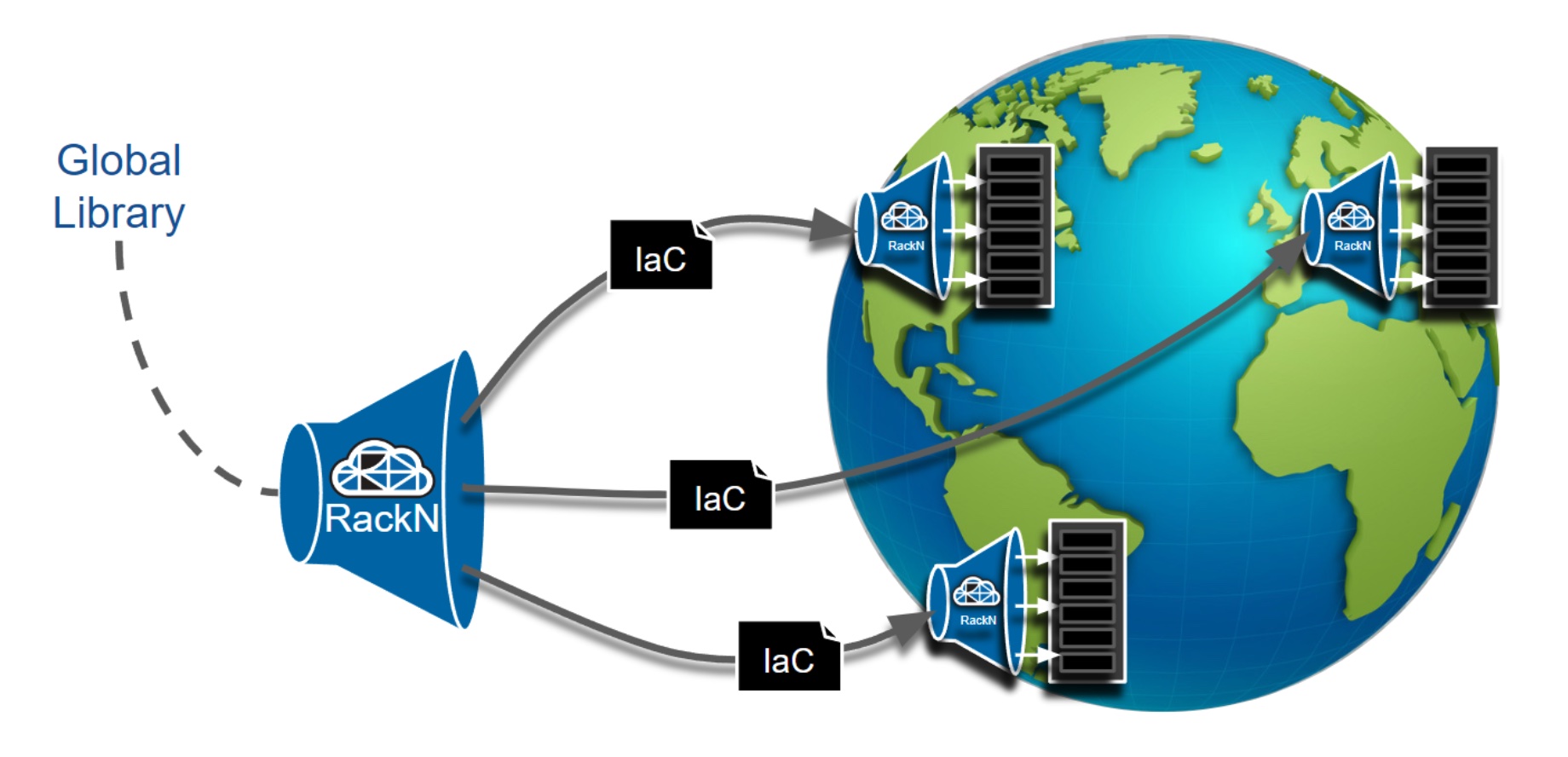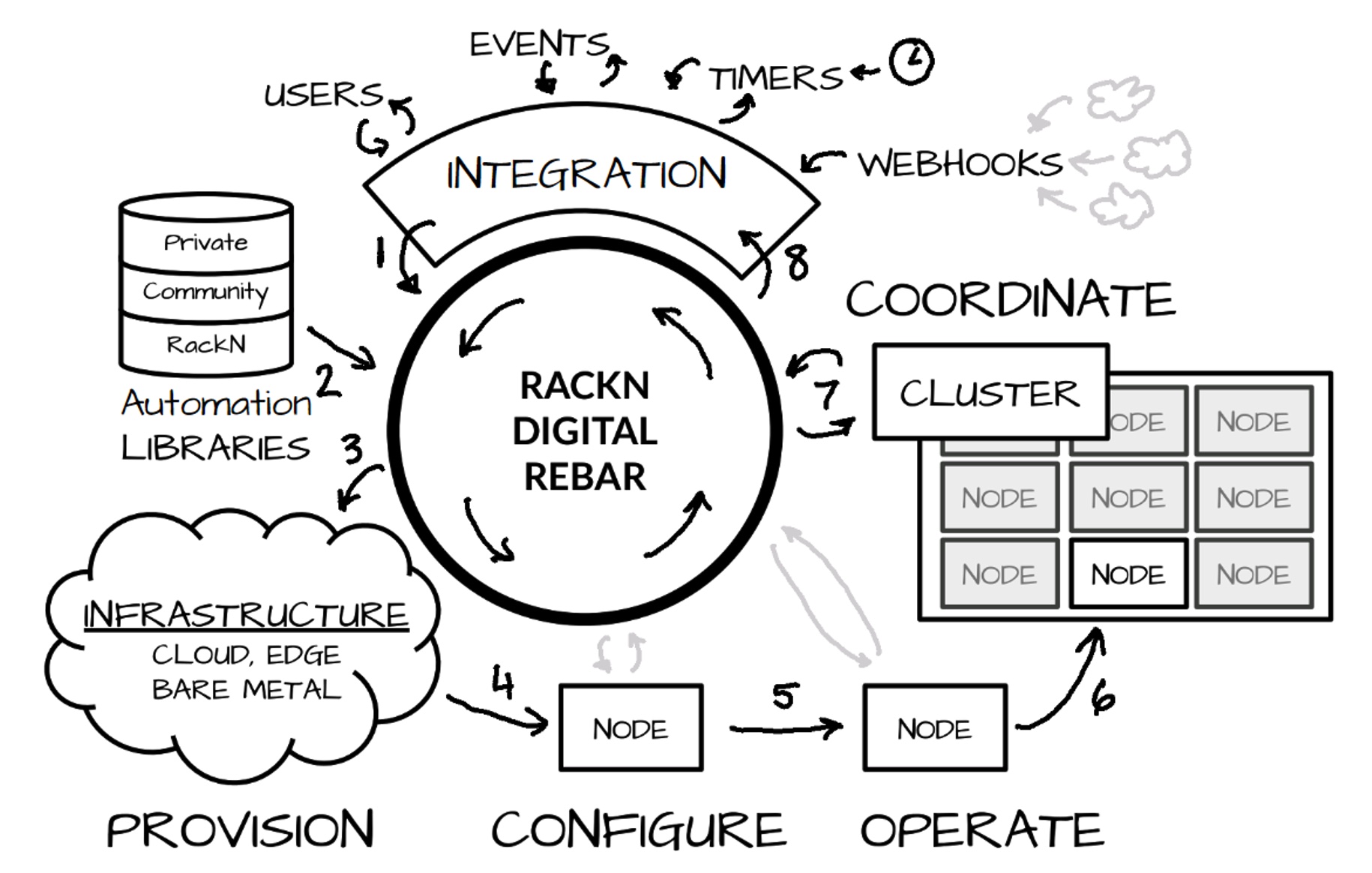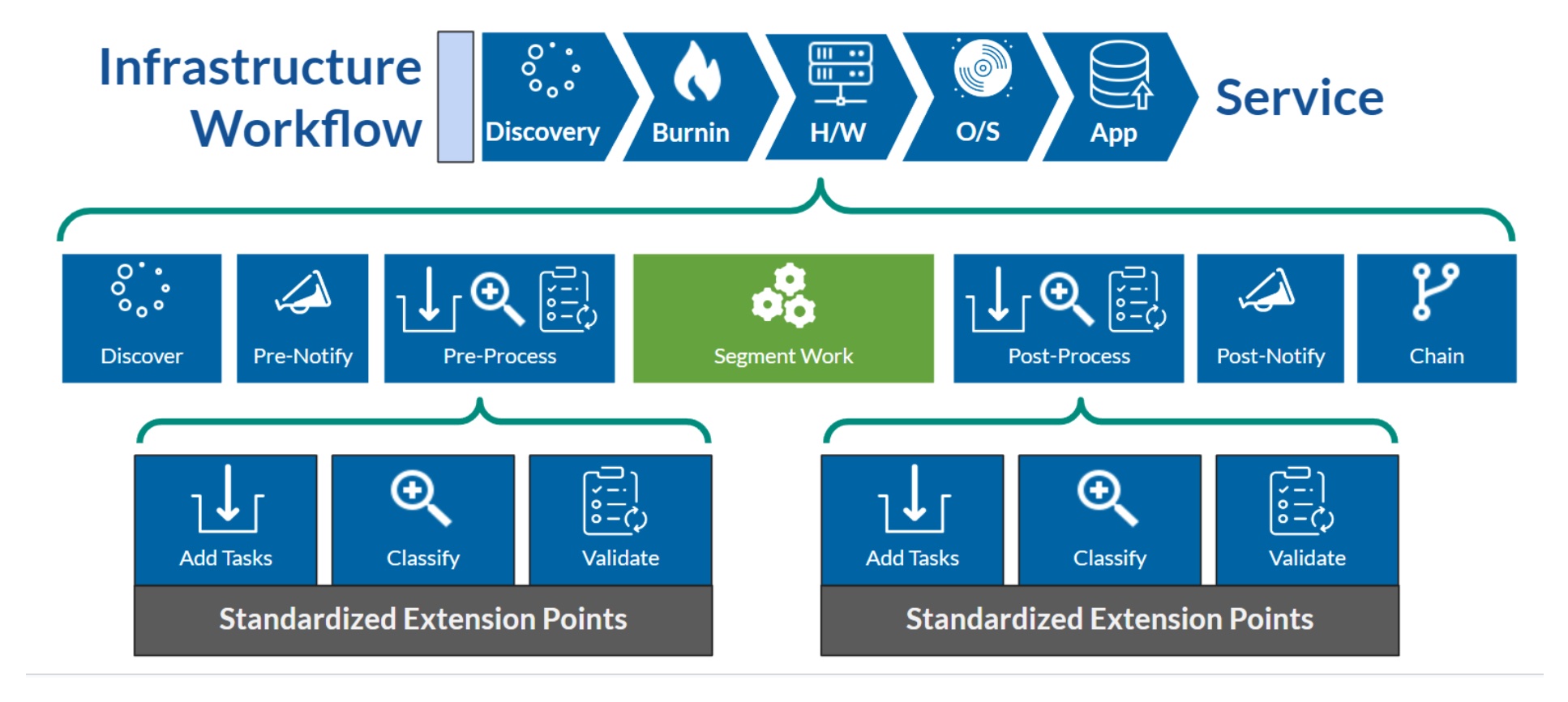In my previous post, I discussed how RackN Digital Rebar enables cloud-like provisioning and management for bare metal infrastructure. While bare metal is largely responsible for powering cloud compute, this is just one piece of the data center puzzle. We also need to consider how these servers are connected into a system as a pipeline. This concept of infrastructure pipelines is another compelling infrastructure use case for Digital Rebar.
Managing Infrastructure at Scale
What do we mean by infrastructure pipelines and how do they help with scale? Consider AWS for example. With services like EC2, Lambda, and EKS, we can see how important the element of compute is to an AWS data center. These services require persistent data storage and their underlying storage infrastructure (EFS, EBS, or S3) provides this. Then there is the topic of networking, which is arguably the most important infrastructure component in any data center, enabling components of an application workload to communicate reliably. AWS hides this infrastructure complexity from users via highly integrated automation, effectively creating pipelines for user requests of their backend services.
Cloud providers like Amazon aren’t alone in running data centers that require infrastructure management at scale. The rise of public cloud created an expectation for modern data centers to provide the agility now demanded by enterprise IT. This often requires geographically dispersed bare metal infrastructure and IT Operations (IT Ops) teams capable of managing it all. RackN introduced infrastructure pipelines with Digital Rebar to help IT Ops tackle the challenge of modern infrastructure management.

API-Driven Pipelines
Infrastructure provisioning is a complex process. The technical differences between the various types of infrastructure and vendors makes consistency an ongoing chore. Infrastructure as Code (IaC) opens the door to automate individual components, but how do you enable workflows with so much variation? Digital Rebar answers this question with multi-platform, API-driven infrastructure pipelines.
The Digital Rebar Declarative API makes it easy to build and manage workflows. These APIs provide a level of flexibility that is not possible with traditional infrastructure deployment methods because users need much less information up front. APIs unlock consistency with less customization for infrastructure deployments at huge scale. By improving the abstraction of the infrastructure, Digital Rebar allows infrastructure stacks to be treated like commodity hardware without the risk of orphans or configuration drift.
IT Ops teams benefit from this level of customization by integrating infrastructure pipelines with other systems and tools. Since Digital Rebar provides event and analysis streams, they can also take advantage of better real-time monitoring and reporting of infrastructure deployments, which streamlines the efficiency of IT Ops teams by breaking down management silos.
Consistency via IaC Catalogs
While Digital Rebar APIs provide flexibility for infrastructure pipelines, its IaC catalogs add a layer of consistency. IT Ops teams typically have large environments to manage across multiple locations. Building an infrastructure pipeline for deployment at a single site is already powerful, but the multi-site use case really shows the power of Digital Rebar. This approach enables operators to convert pipelines to catalog items that can be used across the enterprise. This consistency provides an exciting new level of infrastructure standardization for IT Ops.

IaC catalogs allow infrastructure pipelines to be shared across an organization, enabling collaboration and knowledge sharing between teams. Once fully tested and shared, catalogs unlock the ability to reuse infrastructure configurations at scale. Catalogs reduce the amount of time and effort required to create new pipelines, allowing IT Ops to focus on Platform Engineering goals like proactively enhancing things like monitoring and reporting.
Even better, RackN has a large catalog of pipelines that work out of the box. Unlike other IaC platforms, Digital Rebar is designed to minimize customization so teams benefit from more and more collaboration over time.
Operational Excellence for IT Ops
RackN empowers IT Ops with the consistency, efficiency, and flexibility required to manage modern data centers. Multi-site management in Digital Rebar provides IT Ops with a centralized catalog for all infrastructure deployments. Infrastructure stacks can be deployed across different environments with operational control and security, all managed from one platform.
The reusability provided by IaC catalogs delivers standardization across an organization. This benefits IT Ops by improving efficiency. IT Ops can more easily manage large and complex environments with the confidence that Digital Rebar is providing the governance required by enterprises.
Infrastructure pipelines bring so many efficiencies to IT Ops that the true value of Digital Rebar is realized in faster time to value. RackN helps organizations accelerate the delivery of new applications and services, which is invaluable to Enterprise IT. In my next post I’ll show how the operational consistency of infrastructure pipelines can be used to enhance self-service dev portals.
RackN Tech Talks 2023
This post is part of a series of Gestalt IT Tech Talks focused on RackN. You can learn more on the RackN website or watch their presentations from Cloud Field Day. The complete series is listed in order below:




